Understanding the Impact of Green Energy on Climate Change
Climate change is one of the most pressing challenges of our time, and the solutions we seek are often rooted in our energy choices. Green energy, derived from renewable sources like solar, wind, and hydroelectric power, plays a pivotal role in combating this global crisis. But how exactly does it contribute to mitigating climate change? In this article, we will delve into the various aspects of green energy, exploring its benefits, the challenges it faces, and its significance in paving the way for a sustainable future.
Renewable energy sources are more than just buzzwords; they are the backbone of a sustainable energy future. By harnessing the natural elements around us, such as sunlight, wind, and water, we can significantly reduce our reliance on fossil fuels, which are notorious for their high greenhouse gas emissions. Imagine a world where our energy is sourced from the sun's rays or the wind's gentle breeze—this is not just a dream, but a reality that is becoming increasingly achievable as technology advances. The transition to renewable energy is not merely an option; it is a necessity for our planet's health.
The advantages of green energy extend far beyond environmental benefits. Transitioning to renewable energy sources can lead to a multitude of positive outcomes, including:
- Reduced Air Pollution: By decreasing our reliance on fossil fuels, we can significantly lower the amount of harmful pollutants released into the atmosphere, leading to cleaner air and better health for all.
- Energy Independence: Utilizing local renewable resources can decrease our dependency on imported fuels, enhancing national security and stability.
- Job Creation: The green energy sector is booming, creating a wealth of job opportunities across various fields.
When we invest in green energy, we are not only investing in a cleaner environment but also in a more robust economy. The ripple effects of these benefits can lead to a healthier population and a thriving job market.
Investing in green energy can stimulate economic growth in ways that traditional energy sources cannot. By creating jobs in installation, maintenance, and innovation, we support local economies and promote sustainable development. For instance, consider the impact of a new solar farm in a rural community: it not only provides clean energy but also creates jobs for local workers, boosting the economy and enhancing community resilience.
The renewable energy sector is rapidly growing, leading to significant job opportunities. From engineers designing cutting-edge technology to technicians maintaining wind turbines, various roles are essential for the industry's expansion and sustainability. According to recent studies, the renewable energy sector is projected to create millions of jobs in the coming years, making it a vital component of our economic future.
Switching to green energy can also result in lower utility bills for consumers. While the initial investment in renewable technologies may seem daunting, the long-term savings are undeniable. Over time, as technology advances and becomes more affordable, consumers can enjoy decreased energy costs, making green energy not just an environmentally friendly choice but also a financially savvy one.
Advancements in technology are driving the efficiency and affordability of green energy solutions. Innovations in energy storage, smart grids, and generation methods are transforming the energy landscape. For example, the development of more efficient solar panels and batteries means that we can store energy for use when the sun isn't shining. This not only maximizes the use of renewable resources but also enhances reliability and accessibility for consumers.
Despite its numerous benefits, the transition to green energy is not without its challenges. High initial costs, infrastructure limitations, and policy hurdles must be addressed for widespread adoption. Understanding these challenges is crucial for developing effective solutions that can drive the transition forward.
The existing energy infrastructure often lacks the capability to support renewable energy sources. Upgrading grids and storage systems is essential for integrating green technologies effectively. This involves not only financial investment but also strategic planning to ensure that our energy systems can accommodate the influx of renewable energy.
Government policies play a significant role in promoting or hindering green energy adoption. Supportive regulations and incentives can accelerate the transition to a sustainable energy future. Policymakers need to recognize the importance of green energy and create frameworks that encourage investment and innovation in this sector.
1. What is green energy?
Green energy refers to energy derived from renewable resources that are naturally replenished, such as solar, wind, and hydroelectric power.
2. How does green energy help combat climate change?
By reducing reliance on fossil fuels, green energy decreases greenhouse gas emissions, which are a major contributor to climate change.
3. What are the economic benefits of green energy?
Green energy creates job opportunities, reduces energy costs for consumers, and promotes energy independence, contributing to overall economic growth.
4. What challenges does green energy face?
Challenges include high initial costs, outdated infrastructure, and the need for supportive government policies to facilitate adoption.
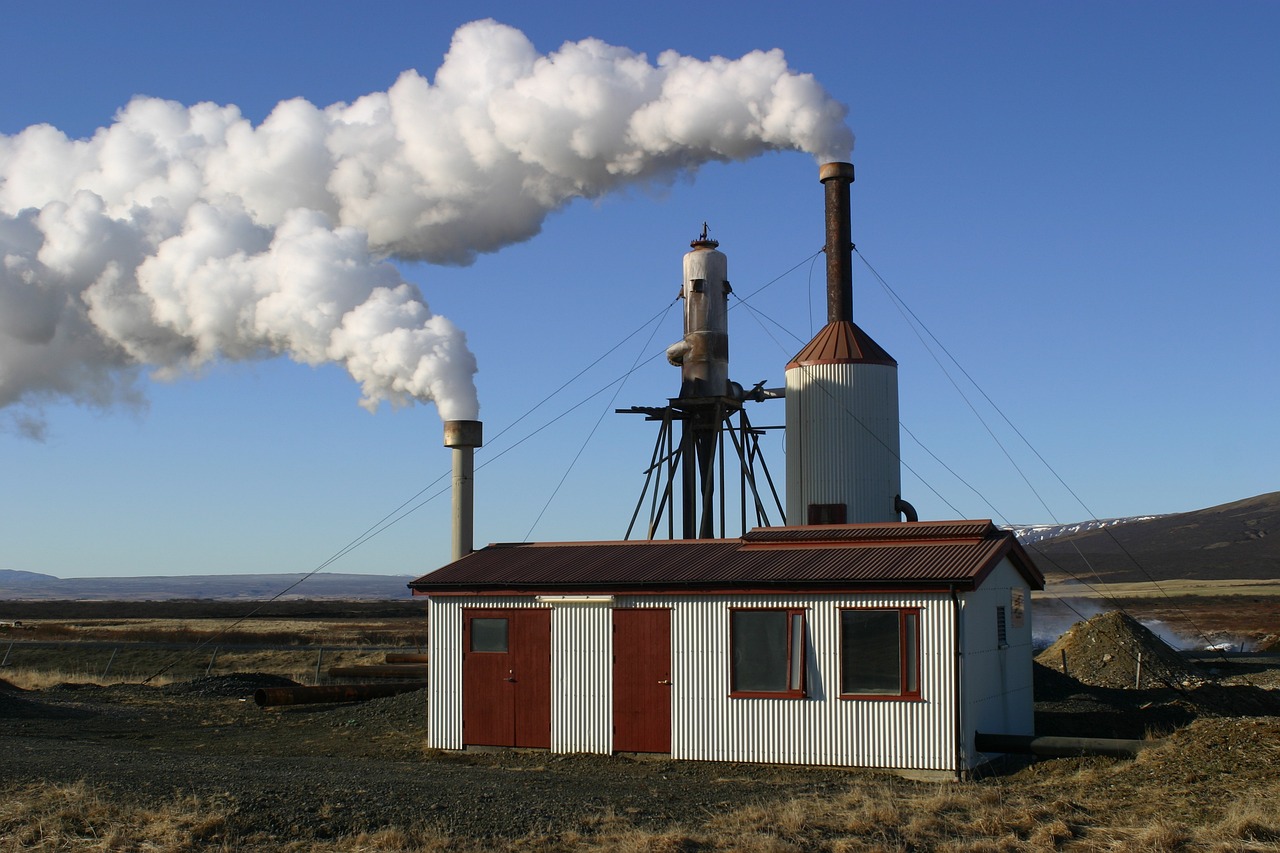
The Role of Renewable Energy Sources
Renewable energy sources, such as solar, wind, and hydroelectric power, play a pivotal role in our fight against climate change. Imagine a world where the sun powers our homes and the wind fuels our cars; this is not just a dream but a rapidly approaching reality. By harnessing these natural resources, we can significantly reduce greenhouse gas emissions that are primarily responsible for global warming. Unlike fossil fuels, which release harmful pollutants into the atmosphere, renewable energy offers a cleaner, sustainable alternative that can help us achieve a healthier planet.
One of the most exciting aspects of renewable energy is its ability to provide energy independence. Countries that rely heavily on imported fossil fuels are vulnerable to price fluctuations and geopolitical tensions. By investing in renewable energy infrastructure, nations can produce their own energy, reducing dependence on foreign oil and enhancing their energy security. This transition not only supports environmental goals but also strengthens national economies.
The benefits of renewable energy extend beyond just environmental impact; they also encompass social and economic dimensions. For instance, the shift to renewable energy sources can lead to job creation in various sectors. According to recent studies, the renewable energy industry has been one of the fastest-growing job markets. Positions range from engineers and technicians to project managers and researchers, all contributing to a sustainable future. This job growth is essential for local economies, providing stable employment opportunities and fostering community development.
Moreover, renewable energy technologies are becoming increasingly affordable due to technological advancements. The cost of solar panels and wind turbines has dropped dramatically over the past decade, making them accessible to a broader audience. As more individuals and businesses adopt these technologies, we can expect a significant decrease in overall energy costs. Imagine slashing your utility bills while contributing to a cleaner environment; this is the reality for many who have made the switch to green energy.
While the transition to renewable energy is promising, it is essential to understand that the journey is not without its challenges. The existing energy infrastructure often requires significant upgrades to accommodate these new technologies. For example, many power grids are not designed to handle the intermittent nature of solar and wind energy. Therefore, investments in infrastructure development are crucial for a successful transition.
In conclusion, the role of renewable energy sources in combating climate change cannot be overstated. They offer a sustainable path forward, providing environmental benefits, economic growth, and energy independence. As we continue to innovate and invest in these technologies, we move closer to a sustainable future where clean energy powers our lives.
- What are renewable energy sources? Renewable energy sources are natural resources that can be replenished, such as solar, wind, and hydroelectric power.
- How do renewable energy sources help combat climate change? They reduce greenhouse gas emissions and provide cleaner alternatives to fossil fuels.
- Can renewable energy create jobs? Yes, the renewable energy sector is rapidly growing and offers various job opportunities across different fields.
- What challenges does renewable energy face? Challenges include high initial costs, infrastructure limitations, and policy hurdles.
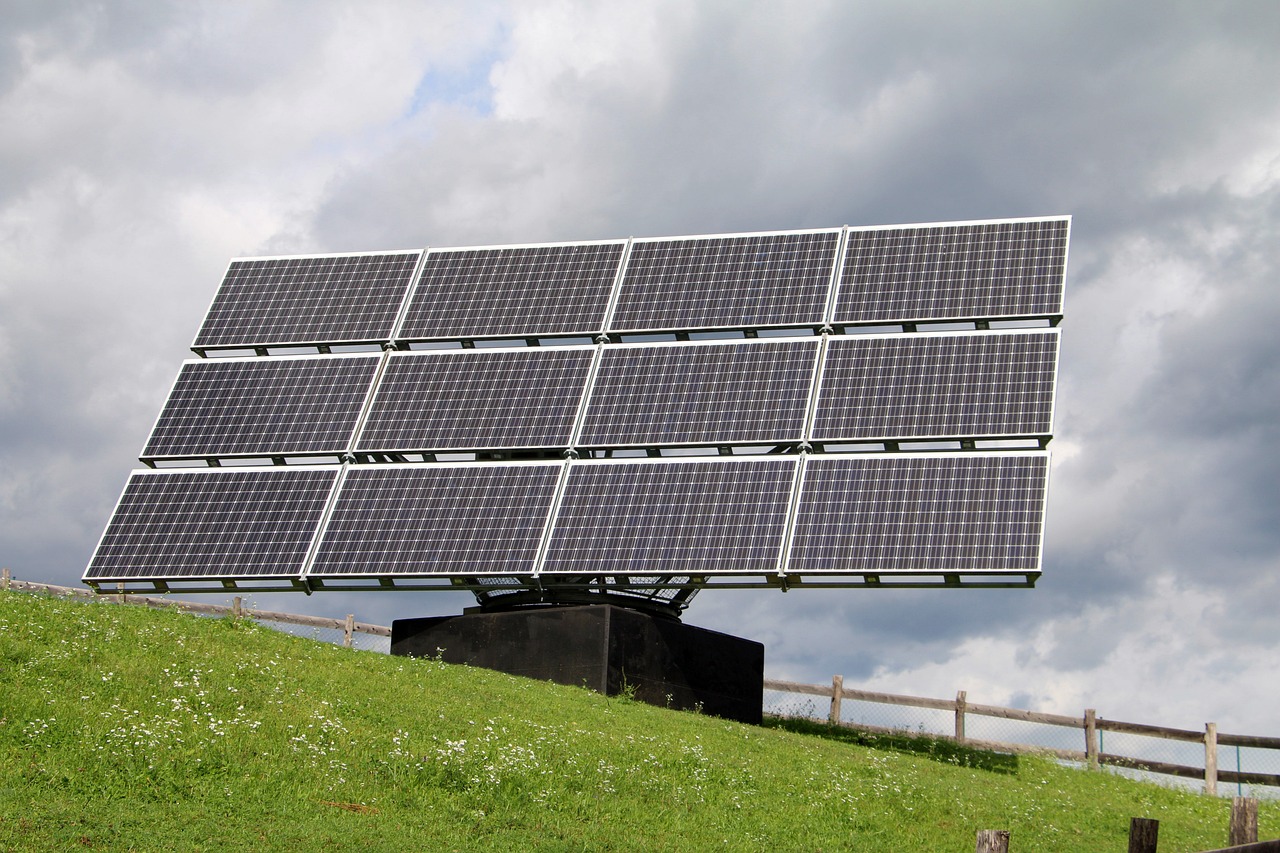
Benefits of Green Energy
When we talk about green energy, we’re diving into a treasure trove of benefits that go beyond just saving a few bucks on our utility bills. Imagine a world where the air is cleaner, jobs are plentiful, and we’re not reliant on foreign oil. Sounds dreamy, right? Well, this is the reality that green energy can help us achieve. Not only does it offer a sustainable alternative to fossil fuels, but it also plays a pivotal role in creating a healthier planet. Let's break down some of the amazing advantages of embracing green energy.
First off, one of the most significant benefits of green energy is its potential to drastically reduce air pollution. Traditional energy sources, like coal and oil, release harmful pollutants into the atmosphere, contributing to respiratory issues and environmental degradation. In contrast, renewable energy sources such as solar, wind, and hydroelectric power produce little to no emissions. This means cleaner air for everyone, which is especially crucial for vulnerable populations like children and the elderly.
Another compelling reason to switch to green energy is energy independence. By investing in local renewable sources, countries can reduce their reliance on imported fossil fuels. This not only enhances national security but also stabilizes energy prices. Imagine being able to power your home with energy generated right in your backyard! This shift not only fosters local economies but also diminishes the geopolitical tensions often associated with oil dependency.
| Benefit | Description |
|---|---|
| Reduced Air Pollution | Green energy sources produce little to no emissions, improving air quality and public health. |
| Energy Independence | Local renewable energy reduces reliance on foreign oil, enhancing national security. |
| Job Creation | The renewable energy sector is a burgeoning field, creating numerous job opportunities. |
| Cost Savings | Long-term savings on energy bills due to lower operational costs of renewable technologies. |
Additionally, the green energy sector is a powerhouse for job creation. As the demand for renewable energy continues to rise, so does the need for skilled workers. From engineers designing innovative solar panels to technicians maintaining wind turbines, the job market is expanding rapidly. This not only helps individuals find stable employment but also invigorates local economies. Think of it like planting seeds in a garden; the more we invest, the more we grow.
Speaking of investments, let’s not overlook the cost savings that come with green energy. While the initial costs of solar panels or wind turbines might seem daunting, the long-term savings can be substantial. Homeowners who switch to renewable energy often see a significant drop in their utility bills. Over time, these investments pay off, making green energy not just an environmentally friendly choice, but also a financially savvy one.
In essence, the benefits of green energy are multifaceted, touching on health, economy, and sustainability. It’s like a triple threat against climate change, offering solutions that are not only good for the planet but also for our wallets and communities. The transition to renewable energy is not just a trend; it’s a necessary evolution for a sustainable future.
- What are the main types of renewable energy? The primary types include solar, wind, hydroelectric, geothermal, and biomass energy.
- How does green energy help combat climate change? By reducing greenhouse gas emissions, green energy sources help lower the overall carbon footprint.
- Are renewable energy sources reliable? Yes, with advancements in technology, renewable energy sources have become increasingly reliable and efficient.
- What can individuals do to support green energy? Individuals can invest in renewable energy systems for their homes, support policies promoting green energy, and choose energy providers that prioritize sustainability.

Economic Impacts
The shift towards green energy is not just an environmental necessity; it is also a profound economic opportunity. By investing in renewable energy sources such as solar, wind, and hydroelectric power, we are not only contributing to a healthier planet but also stimulating economic growth. This transition creates a ripple effect that enhances job creation, boosts local economies, and fosters innovation.
One of the most significant economic impacts of green energy is the creation of jobs. According to recent studies, the renewable energy sector is projected to generate millions of jobs globally over the next decade. These jobs span a wide range of roles, from engineers and project managers to technicians and installers. For example, in the United States alone, the solar industry employed over 250,000 workers in 2022, showcasing the immense potential for job growth in this field.
Moreover, the jobs created in the renewable energy sector tend to be more sustainable than those in traditional fossil fuel industries. They often provide better wages and benefits, contributing to a more robust middle class. As an analogy, think of green energy as a garden: the more we invest in it, the more it grows, providing not just fruits and vegetables (jobs) but also a healthier environment (a sustainable economy) for future generations.
Another critical aspect of the economic impact of green energy is the potential for cost savings for consumers. While the initial investment in renewable technologies can be higher compared to conventional energy sources, the long-term savings can be substantial. For instance, homeowners who install solar panels can significantly reduce their electricity bills. A study by the National Renewable Energy Laboratory found that homeowners could save an average of $20,000 over 20 years by switching to solar energy.
To illustrate this point further, consider the following table that compares the average energy costs of traditional energy sources versus renewable energy sources over a 20-year period:
| Energy Source | Average Monthly Cost | 20-Year Total Cost |
|---|---|---|
| Traditional (Fossil Fuels) | $150 | $36,000 |
| Solar Energy | $80 | $19,200 |
As you can see, the savings from switching to renewable energy can be substantial, allowing consumers to allocate their funds towards other areas, thereby stimulating the economy further. Additionally, the growth of the green energy sector encourages innovation and technological advancements. Companies are continually seeking ways to improve energy efficiency, reduce costs, and develop new technologies, leading to a more competitive market.
In conclusion, the economic impacts of green energy are profound and multifaceted. From job creation to cost savings and technological innovation, the transition to renewable energy sources promises not just a cleaner environment but also a vibrant economy. As we embrace this change, we pave the way for a sustainable future where economic growth and environmental responsibility go hand in hand.
- What are the main benefits of switching to green energy?
Switching to green energy reduces greenhouse gas emissions, lowers energy costs, creates jobs, and promotes energy independence. - How does green energy contribute to job creation?
The renewable energy sector is rapidly expanding, leading to new job opportunities in various areas such as installation, maintenance, and research. - What are some challenges to adopting green energy?
Challenges include high initial costs, outdated infrastructure, and regulatory hurdles that need to be addressed for widespread adoption.
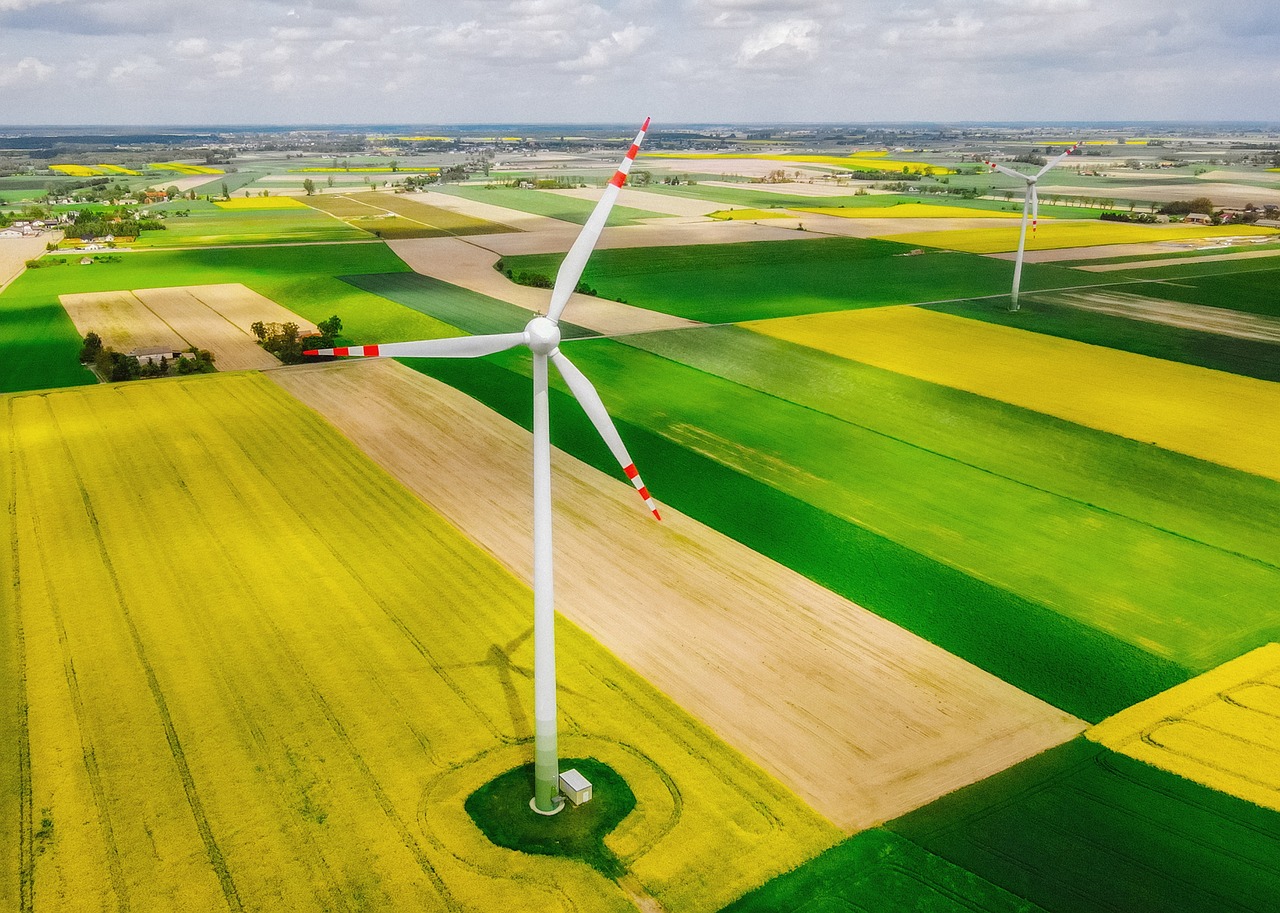
Job Creation in the Renewable Sector
The renewable energy sector is not just a buzzword; it’s a booming industry that’s creating a wealth of job opportunities that are as diverse as the technologies themselves. As we shift away from fossil fuels, the demand for skilled professionals in this field is skyrocketing. Imagine a world where the air is cleaner, the economy is robust, and jobs are plentiful—all thanks to green energy. Sounds pretty fantastic, right? Well, it’s already happening!
From solar panel installers to wind turbine technicians, the range of careers available in the renewable sector is impressive. These roles not only support the transition to sustainable energy but also contribute to local economies. For instance, in 2022 alone, the solar industry created over 250,000 jobs in the United States, and this number is expected to grow as more homes and businesses opt for solar energy solutions.
To give you a clearer picture, here’s a breakdown of some of the key job categories within the renewable energy sector:
| Job Title | Description | Average Salary |
|---|---|---|
| Solar Photovoltaic Installer | Installs and maintains solar panels on rooftops and other structures. | $45,000 - $70,000 |
| Wind Turbine Technician | Maintains and repairs wind turbines, ensuring they operate efficiently. | $50,000 - $80,000 |
| Energy Efficiency Specialist | Advises businesses and homeowners on ways to reduce energy consumption. | $60,000 - $90,000 |
| Environmental Engineer | Designs solutions to environmental problems, often focusing on renewable energy systems. | $70,000 - $100,000 |
But it’s not just about the numbers; it’s about the impact these jobs have on communities. Local economies thrive when jobs are created, and the renewable energy sector is a catalyst for this growth. Think of it as planting a seed; as the industry grows, it nurtures various sectors, from manufacturing to service industries, creating a ripple effect that benefits everyone.
Moreover, the renewable energy sector is also a breeding ground for innovation. As technology evolves, new roles are emerging that didn’t exist a decade ago. Positions like data analysts and energy storage specialists are now vital as companies strive to optimize energy efficiency and sustainability. This evolution not only provides job security for the current workforce but also opens doors for future generations.
In conclusion, the renewable energy sector is a powerhouse for job creation, offering a variety of roles that cater to different skill sets and interests. It’s an exciting time to be part of this industry, as it not only promises a sustainable future but also a vibrant job market. So, whether you’re considering a career change or just starting out, the renewable energy field is ripe with opportunities waiting to be explored.
- What types of jobs are available in the renewable energy sector? There are various roles, including solar panel installers, wind turbine technicians, energy efficiency specialists, and environmental engineers.
- How much can I earn in the renewable energy field? Salaries vary depending on the job title and location, with many positions offering competitive wages ranging from $45,000 to over $100,000.
- Is there a demand for jobs in renewable energy? Yes, the demand is increasing as more companies and individuals shift towards sustainable energy solutions.
- What skills are needed for a career in renewable energy? Skills in engineering, installation, maintenance, and data analysis are highly sought after in the renewable energy sector.
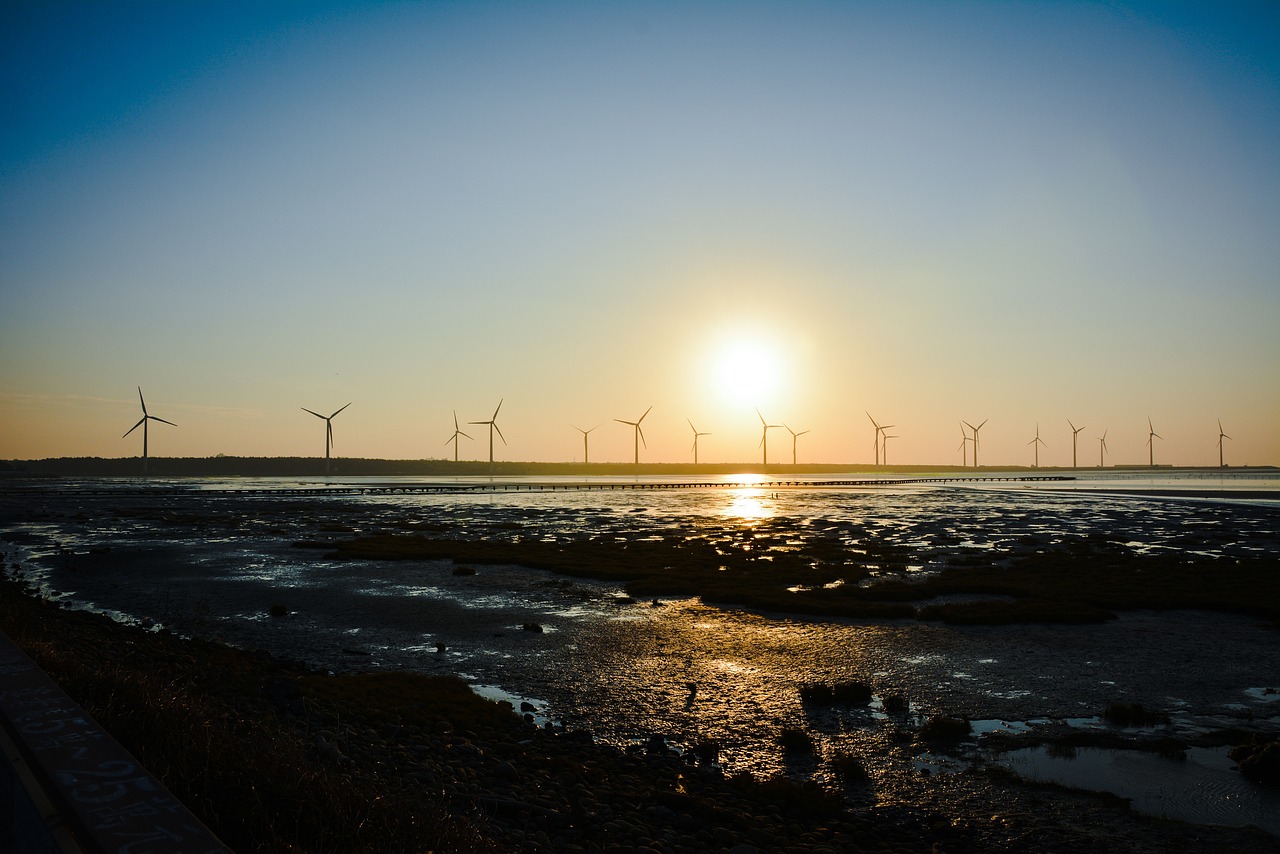
Cost Savings for Consumers
Switching to green energy isn't just about saving the planet; it's also about saving some serious cash! Imagine waking up one day to find that your utility bills have significantly decreased. Sounds like a dream, right? Well, for many consumers, this dream is becoming a reality as renewable energy sources like solar and wind power become more accessible and affordable.
Initially, the thought of investing in solar panels or wind turbines might seem daunting due to the upfront costs. However, it's essential to look at the bigger picture. Over time, these investments can lead to substantial savings. For instance, homeowners who install solar panels can expect to save thousands on their electricity bills over the lifespan of the system. According to recent studies, solar energy can reduce electricity costs by up to 70% in some regions!
But wait, there's more! Many governments offer incentives, rebates, and tax credits to encourage the adoption of renewable energy. These financial incentives can significantly lower the initial investment, making it easier for consumers to transition to greener options. For example, a homeowner might receive a tax credit of 26% for installing solar panels, which can dramatically decrease the overall cost. This means that the initial outlay can be recouped much faster than one might expect.
Let's break it down a bit further. Here’s a simple table illustrating the potential savings for consumers who switch to solar energy:
| Year | Estimated Savings | Initial Investment | Net Savings |
|---|---|---|---|
| 1 | $1,200 | $15,000 | -$13,800 |
| 5 | $6,000 | $15,000 | -$9,000 |
| 10 | $12,000 | $15,000 | -$3,000 |
| 25 | $30,000 | $15,000 | $15,000 |
As you can see from the table, while there might be an initial investment, the long-term savings are undeniable. By year ten, consumers are already on their way to breaking even, and after twenty-five years, they are pocketing a whopping $15,000 in savings!
Moreover, the savings don't just stop at home. Businesses that adopt green energy solutions can also enjoy lower operational costs, which can lead to reduced prices for consumers. This ripple effect can create a more competitive market, benefiting everyone involved.
In conclusion, the transition to green energy is not merely an environmental choice; it’s a smart financial decision. With the potential for significant savings, government incentives, and the promise of lower utility bills, consumers have every reason to embrace renewable energy. After all, who wouldn't want to save money while contributing to a healthier planet?
- What are the initial costs associated with switching to green energy? The initial costs can vary depending on the type of renewable energy system you choose, but government incentives can help offset these costs.
- How long does it take to see savings from green energy? Typically, consumers start seeing savings within the first few years, with significant savings accumulating over time.
- Are there any financial incentives for switching to renewable energy? Yes! Many governments offer tax credits, rebates, and other financial incentives to encourage the adoption of renewable energy sources.
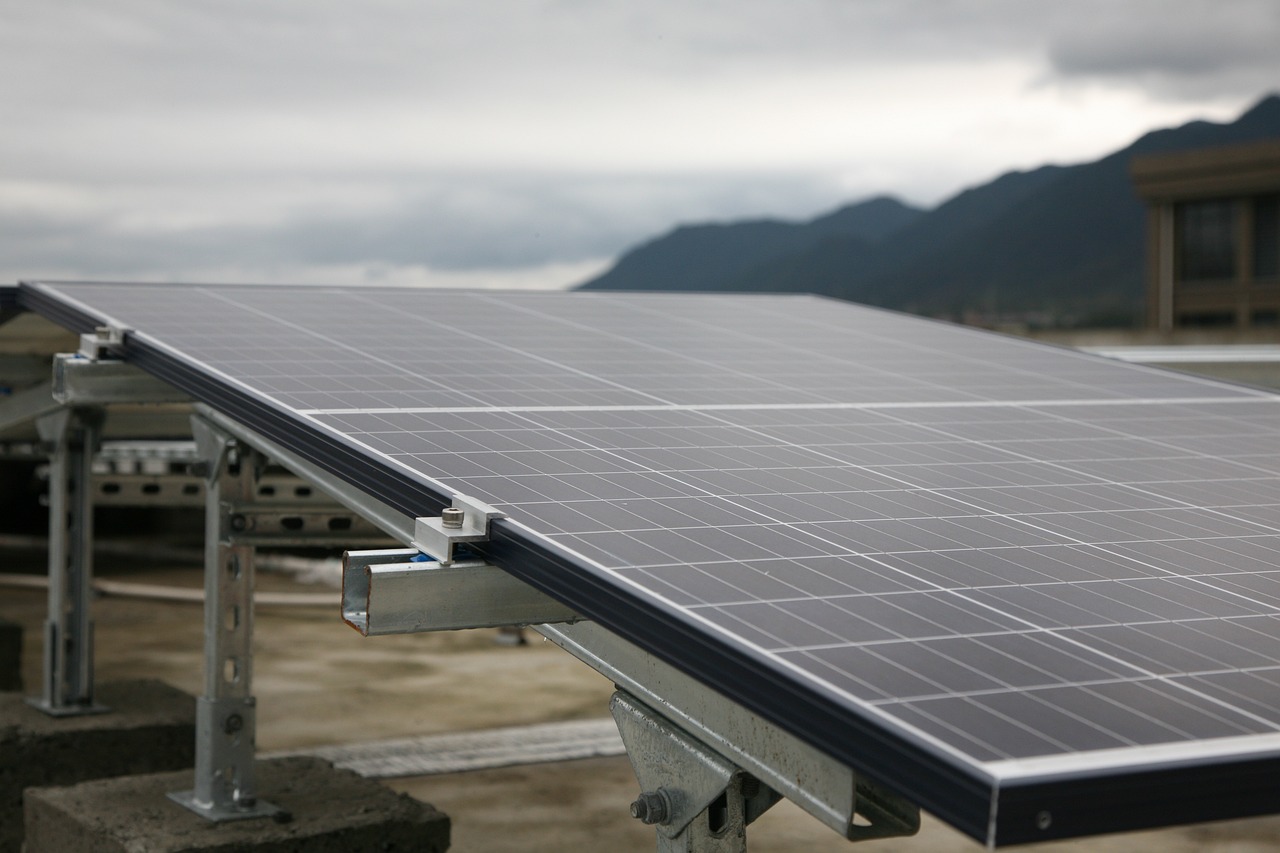
Technological Innovations
In the ever-evolving world of energy, are at the forefront of making green energy not just a dream, but a reality. Imagine a world where the sun and wind are our primary sources of power, all thanks to cutting-edge technology! From solar panels that can generate energy even on cloudy days to wind turbines that can harness even the slightest breeze, the advancements in renewable energy technologies are nothing short of revolutionary.
One of the most exciting developments is in energy storage solutions. Traditional batteries have often struggled with efficiency and longevity, but new innovations are changing the game. For instance, lithium-ion batteries are becoming more efficient, allowing for longer storage times and faster charging. Additionally, emerging technologies like solid-state batteries promise even greater efficiency and safety, paving the way for a more reliable energy grid.
Moreover, the introduction of smart grids is transforming how we consume and manage energy. These grids utilize advanced software and communication technologies to optimize energy distribution and consumption. Imagine being able to control your home’s energy use remotely, adjusting your consumption based on real-time energy prices or even the availability of renewable resources! This not only empowers consumers but also helps in balancing supply and demand, making the entire system more efficient.
Another noteworthy innovation is in the field of solar technology. The rise of photovoltaic cells with higher conversion efficiencies means that we can capture more energy from the sun than ever before. Additionally, technologies like bifacial solar panels, which can capture sunlight from both sides, are being deployed to maximize energy output. These advancements are crucial as they help reduce the land footprint required for solar farms while increasing energy production.
As we look at the future of green energy, it’s clear that are not just enhancing the efficiency of renewable energy sources but are also making them more accessible and affordable. The combination of these technologies is leading to a significant reduction in the overall cost of renewable energy, making it a viable option for more consumers and businesses alike. The journey toward a sustainable energy future is not just about adopting new technologies; it's about integrating them into our daily lives and ensuring they are accessible to everyone.
- What are some examples of technological innovations in green energy? Innovations include advanced solar panels, efficient energy storage systems, and smart grid technologies.
- How do smart grids work? Smart grids use digital technology to monitor and manage the transport of electricity from all generation sources to meet the varying electricity demands of end users.
- What is the future of renewable energy technology? The future is bright, with ongoing research and development aimed at improving efficiency, reducing costs, and increasing accessibility for all.

Challenges Facing Green Energy Adoption
As we dive into the realm of green energy, it's crucial to recognize that the journey toward a sustainable future is not without its challenges. While renewable energy sources like solar, wind, and hydroelectric power offer promising solutions to combat climate change, several hurdles still loom large. One of the most significant challenges is the high initial costs associated with transitioning to green technologies. Many individuals and businesses are hesitant to invest in renewable energy systems, fearing that the upfront expenses will outweigh the long-term benefits. This perception can stall progress, as potential adopters weigh their options.
Another major roadblock is the infrastructure limitations. The current energy infrastructure in many regions was designed primarily for fossil fuels, and it often lacks the capacity to integrate renewable energy sources effectively. This means that substantial upgrades to the existing grid and energy storage systems are necessary to accommodate the influx of green energy. Imagine trying to fit a square peg into a round hole; that’s what it feels like when trying to force renewable energy into outdated systems. Without these upgrades, the potential of green energy cannot be fully realized.
Moreover, policy and regulation play a pivotal role in the adoption of green energy. Government policies can either act as a catalyst for change or serve as a significant barrier. In some regions, lack of supportive regulations or insufficient incentives can discourage investments in renewable technologies. For instance, tax credits and subsidies can make a world of difference in how attractive green energy solutions appear to consumers and businesses. If the government does not step up to create a favorable environment, the transition to a sustainable energy future may slow to a crawl.
Additionally, public perception and awareness are crucial in overcoming these challenges. Many people still harbor misconceptions about renewable energy, believing it to be unreliable or too expensive. Education and outreach are essential to dispel these myths and inform the public about the long-term benefits of green energy. When individuals understand that renewable energy can lead to lower utility bills and a healthier planet, they are more likely to support and invest in these technologies.
To further illustrate the challenges, let's take a look at the following table that summarizes some of the key obstacles faced in the green energy sector:
| Challenge | Description |
|---|---|
| High Initial Costs | Many renewable energy systems require significant upfront investment, which can deter potential adopters. |
| Infrastructure Limitations | Existing energy grids are often not equipped to handle renewable energy sources effectively. |
| Policy and Regulation | Inadequate government support and regulations can hinder the growth of the green energy sector. |
| Public Perception | Misconceptions about renewable energy can lead to resistance to change and adoption. |
In conclusion, while the path to widespread green energy adoption is fraught with challenges, it is not insurmountable. By addressing these obstacles head-on through investment, infrastructure upgrades, supportive policies, and public education, we can pave the way for a sustainable energy future that benefits both the planet and its inhabitants.
- What are the main challenges in adopting green energy? The primary challenges include high initial costs, infrastructure limitations, policy and regulation issues, and public perception.
- How can governments support green energy adoption? Governments can provide incentives such as tax credits, subsidies, and supportive regulations to encourage investments in renewable energy.
- Is renewable energy more expensive than fossil fuels? While the initial investment may be higher, renewable energy can lead to lower utility bills over time, making it cost-effective in the long run.
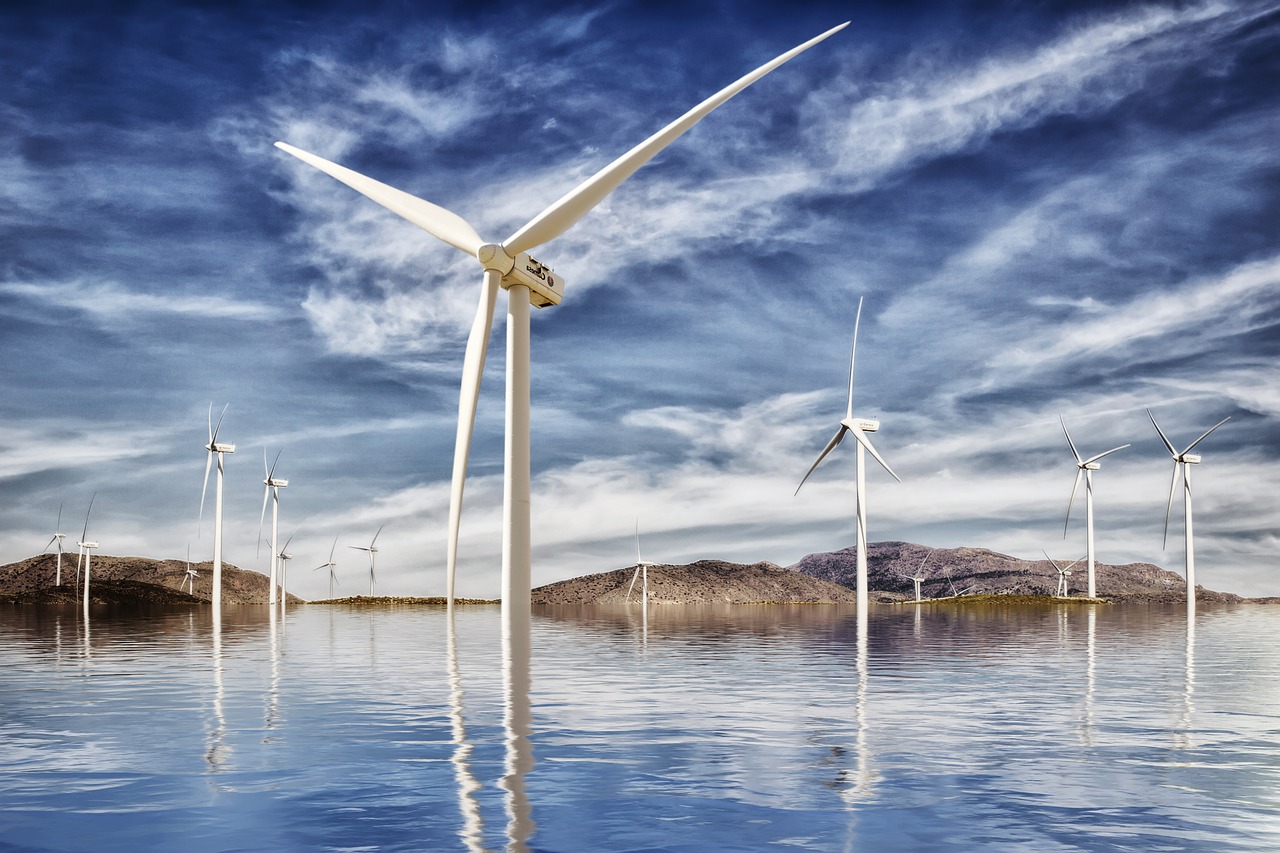
Infrastructure Development
When we talk about in the context of green energy, we're diving into a complex web of challenges and opportunities. You see, the existing energy infrastructure in many regions is often heavily reliant on traditional fossil fuels, which poses a significant barrier to the integration of renewable energy sources like solar and wind. Imagine trying to fit a square peg into a round hole; that's essentially what we're facing when trying to incorporate these innovative energy solutions into outdated systems.
One of the key issues is that the current grids were not designed to handle the variability and decentralization that come with renewable energy. Unlike fossil fuel plants that produce a steady output, renewable sources can be unpredictable. For instance, solar power generation dips at night, and wind energy fluctuates with weather conditions. This inconsistency requires a robust and adaptable infrastructure that can manage these changes efficiently. To address this, we need to invest in smart grids—an advanced electrical grid that uses digital technology to monitor and manage the transport of electricity from all generation sources to meet the varying electricity demands of end users.
Furthermore, energy storage solutions are essential for balancing supply and demand. Without adequate storage, we risk wasting precious energy generated during peak production times. Technologies such as batteries and pumped hydro storage are pivotal in this transition, allowing us to store excess energy for later use. The development of these storage systems is not just a technical challenge but also a significant investment opportunity. The table below illustrates the various types of energy storage technologies and their potential impact on the renewable energy landscape:
| Storage Technology | Advantages | Challenges |
|---|---|---|
| Lithium-ion Batteries | High energy density, fast response time | High cost, limited lifespan |
| Pumped Hydro Storage | Large capacity, long discharge duration | Geographic limitations, environmental concerns |
| Flywheel Energy Storage | High power output, long cycle life | High initial costs, mechanical wear |
In addition to grid upgrades and storage solutions, we must also consider the physical infrastructure needed to harness renewable resources effectively. This includes the installation of wind turbines, solar panels, and hydroelectric systems. Each of these technologies requires substantial investment in construction and maintenance to ensure they operate efficiently and effectively. This is where government support and public-private partnerships become crucial. By fostering collaboration between various stakeholders, we can accelerate the development of the necessary infrastructure to support a green energy future.
Ultimately, overcoming the challenges of infrastructure development is vital for the success of green energy adoption. It’s not just about building new systems; it’s about reimagining how we produce, distribute, and consume energy in a sustainable way. The transition to renewable energy is akin to upgrading from a flip phone to a smartphone—it's about efficiency, adaptability, and a better overall user experience. As we invest in these improvements, we pave the way for a cleaner, more sustainable future that benefits everyone.
- What is the main challenge in developing infrastructure for green energy? The primary challenge is upgrading existing grids to handle the variability of renewable energy sources.
- How do smart grids contribute to renewable energy adoption? Smart grids use digital technology to manage electricity flow, allowing for better integration of renewable sources.
- What role do energy storage solutions play? Energy storage helps balance supply and demand, ensuring that excess energy generated can be used when production is low.
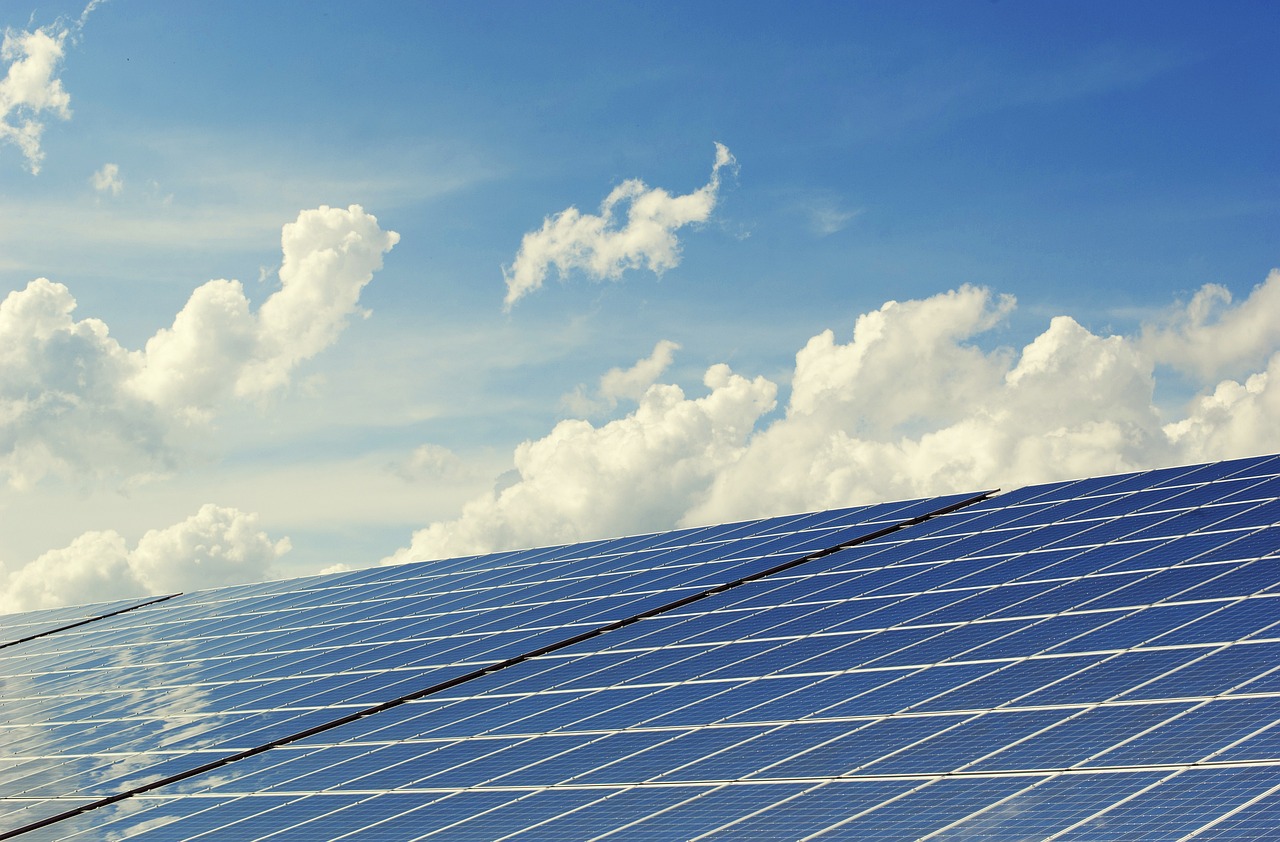
Policy and Regulation
The transition to green energy is not just a technical challenge; it’s deeply entwined with . Governments around the world have the power to either accelerate or hinder the adoption of renewable energy sources through their legislative frameworks. Think of it like a race: without a clear set of rules and a supportive environment, many competitors (in this case, renewable technologies) may struggle to even get off the starting line.
One of the most significant ways that policy can influence green energy adoption is through incentives and subsidies. For instance, tax credits for solar panel installations or grants for wind energy projects can make these technologies more accessible to both consumers and businesses. When people see that they can save money or receive financial support for going green, they’re much more likely to take the plunge. Conversely, a lack of such incentives can lead to stagnation, as potential adopters may feel that the costs outweigh the benefits.
Moreover, regulatory frameworks can dictate how quickly and effectively renewable energy sources can be integrated into the existing energy grid. If regulations are too stringent or unclear, they can create bottlenecks that slow down progress. For example, lengthy permitting processes can delay the construction of solar farms or wind turbines, causing frustration among developers and investors alike. On the flip side, streamlined processes can lead to rapid deployment of green technologies, benefiting both the economy and the environment.
Another crucial aspect of policy and regulation is the establishment of renewable energy targets. Countries that set ambitious goals for renewable energy adoption can create a sense of urgency and motivation among stakeholders. These targets not only encourage investment but also foster innovation as companies strive to meet the demand for cleaner energy solutions. For example, nations like Germany and Denmark have made significant strides in wind energy, largely due to strong governmental support and clear targets.
However, it’s not just about setting goals; it's also about ensuring that there’s a robust framework for monitoring and achieving these targets. This is where accountability mechanisms come into play. Governments need to establish systems that track progress and ensure that commitments are met. Without such mechanisms, promises can easily fall by the wayside, leading to disillusionment and a loss of faith in renewable energy initiatives.
In summary, the role of policy and regulation in the green energy landscape is multifaceted and critical. From providing financial incentives to establishing clear goals and accountability measures, effective policies can pave the way for a sustainable energy future. As we move forward, it’s essential that governments, industry stakeholders, and communities work together to create an environment that nurtures innovation and facilitates the widespread adoption of renewable energy.
- What are the main types of renewable energy? Renewable energy sources include solar, wind, hydroelectric, geothermal, and biomass.
- How do government policies affect renewable energy adoption? Policies can provide financial incentives, set targets, and create regulations that either promote or hinder the growth of renewable energy.
- What are some benefits of transitioning to green energy? Benefits include reduced greenhouse gas emissions, improved air quality, energy independence, and job creation.
- What challenges does the green energy sector face? Challenges include high initial costs, infrastructure limitations, and the need for supportive policies and regulations.
Frequently Asked Questions
- What is green energy?
Green energy refers to energy generated from natural, renewable sources that have a minimal impact on the environment. This includes solar, wind, hydroelectric, and geothermal energy. Unlike fossil fuels, these sources help reduce greenhouse gas emissions and combat climate change.
- How does green energy help combat climate change?
Green energy plays a crucial role in reducing greenhouse gas emissions, which are a major contributor to climate change. By replacing fossil fuels with renewable sources, we can significantly lower carbon footprints and promote a healthier planet for future generations.
- What are the economic benefits of transitioning to green energy?
Transitioning to green energy can stimulate economic growth by creating jobs in various sectors, including installation, maintenance, and technology development. Additionally, green energy can lead to lower utility bills for consumers and promote energy independence.
- Are there job opportunities in the renewable energy sector?
Absolutely! The renewable energy sector is booming, creating a wide array of job opportunities. From engineers and technicians to project managers and researchers, there are numerous roles available that contribute to the industry's growth and sustainability.
- What challenges does green energy face?
While green energy offers many benefits, it also faces challenges such as high initial costs, outdated infrastructure, and regulatory hurdles. Addressing these challenges is essential for widespread adoption and effective integration of renewable energy sources into our existing systems.
- How can government policies influence green energy adoption?
Government policies play a significant role in either promoting or hindering the transition to green energy. Supportive regulations, incentives, and funding can accelerate the adoption of renewable technologies, while restrictive policies can slow down progress.
- What technological innovations are driving green energy solutions?
Recent advancements in technology, such as improved energy storage systems, smart grids, and more efficient generation methods, are transforming the green energy landscape. These innovations make renewable energy more accessible and affordable for consumers and businesses alike.



















